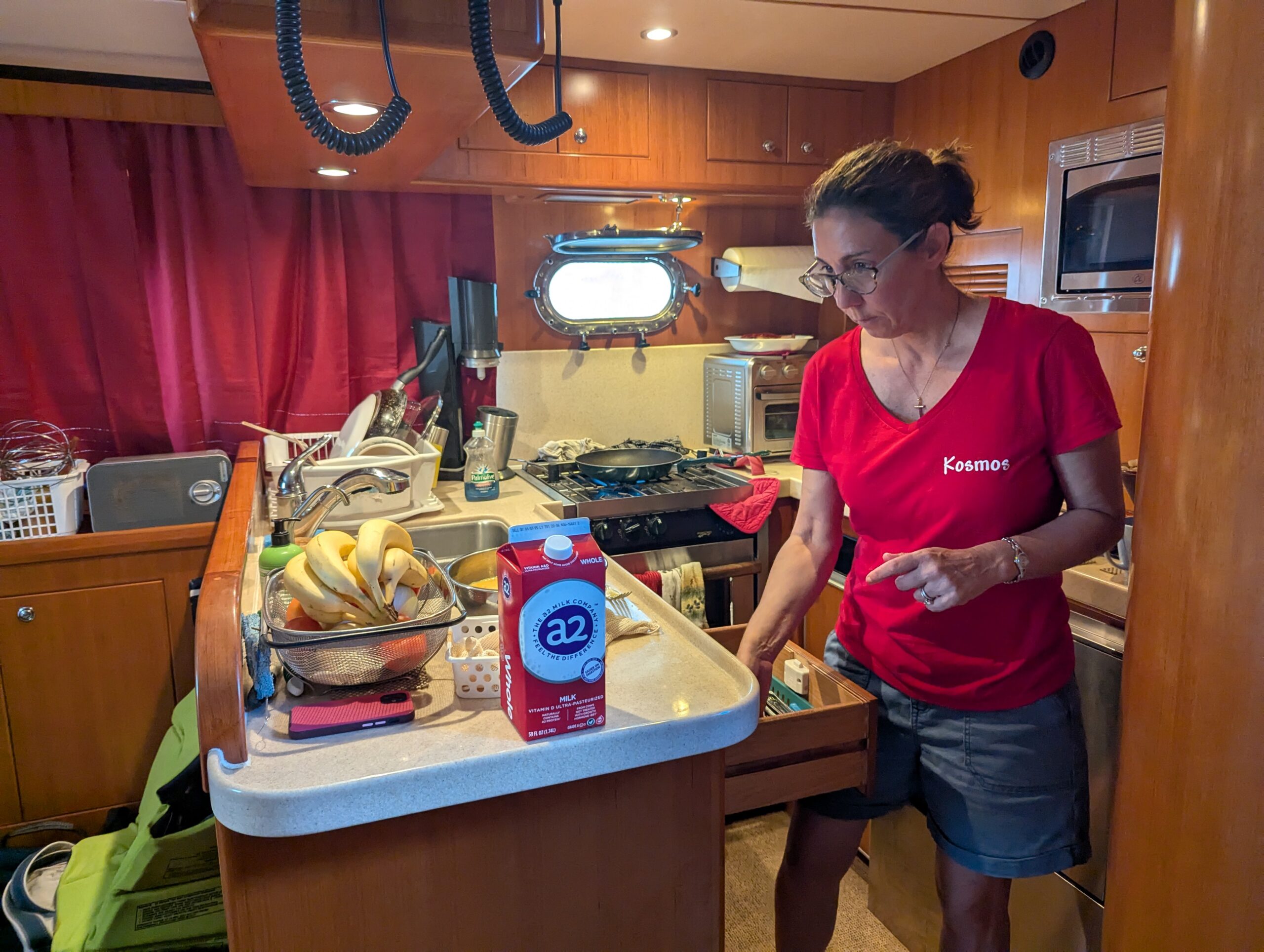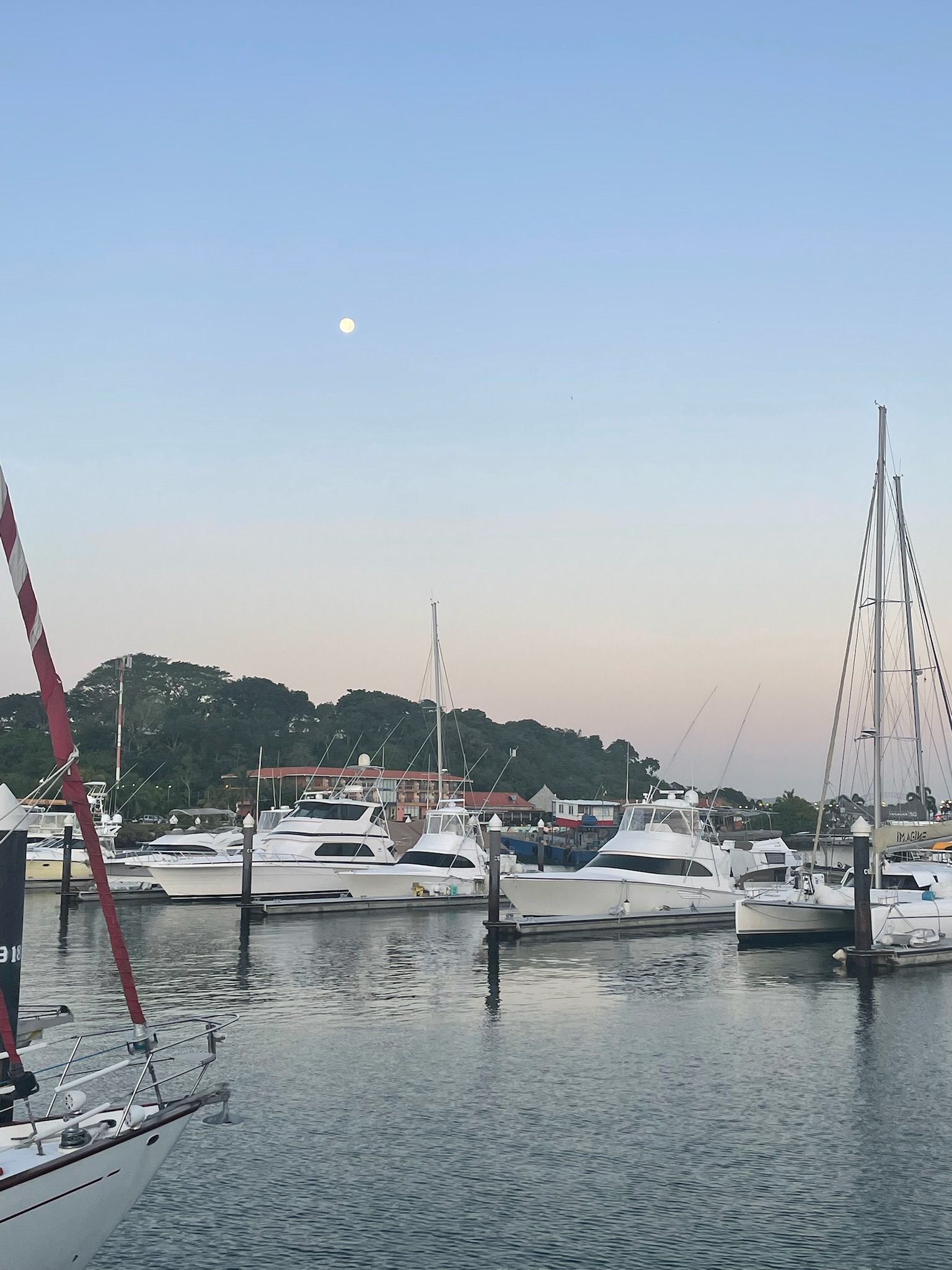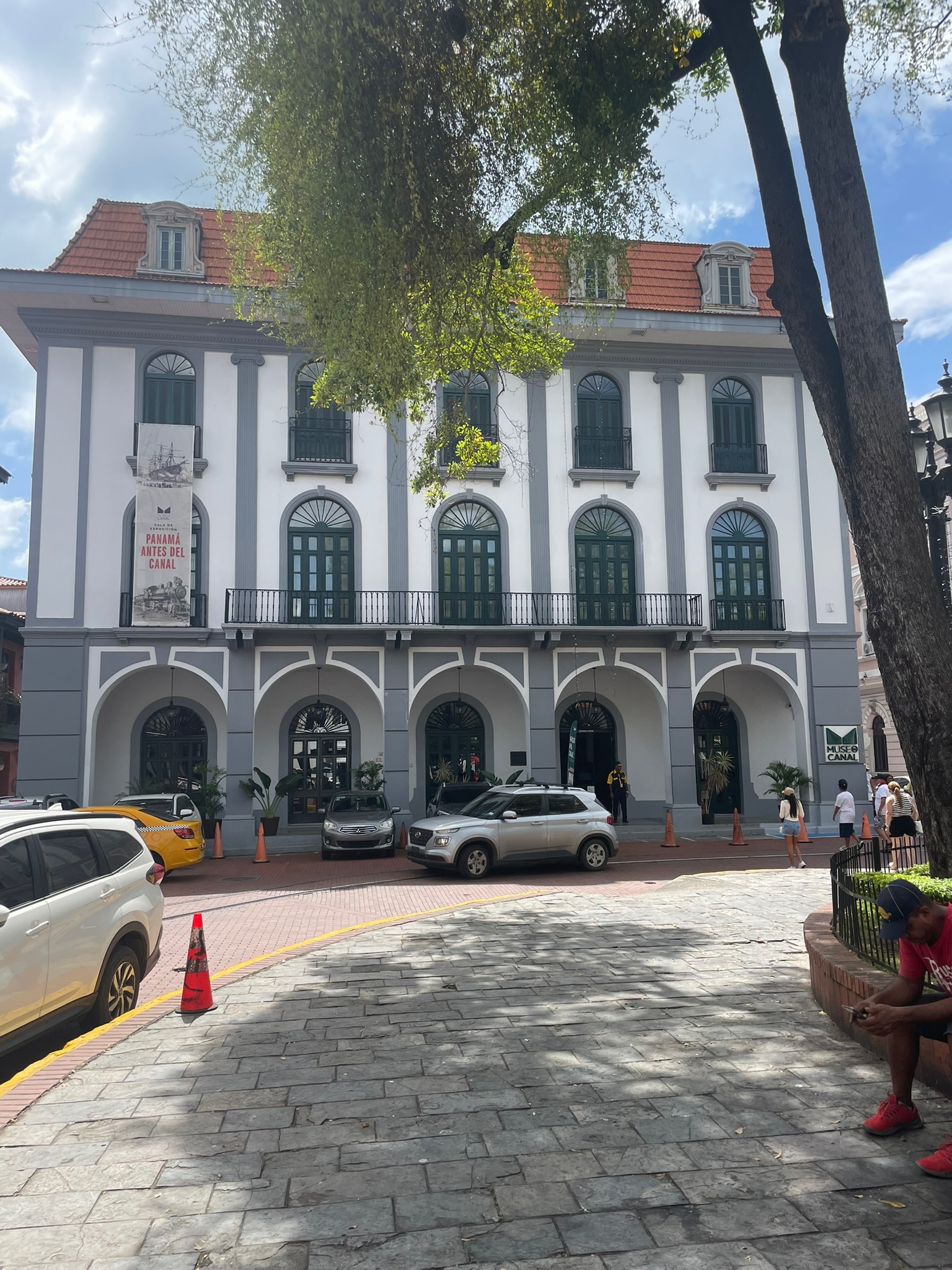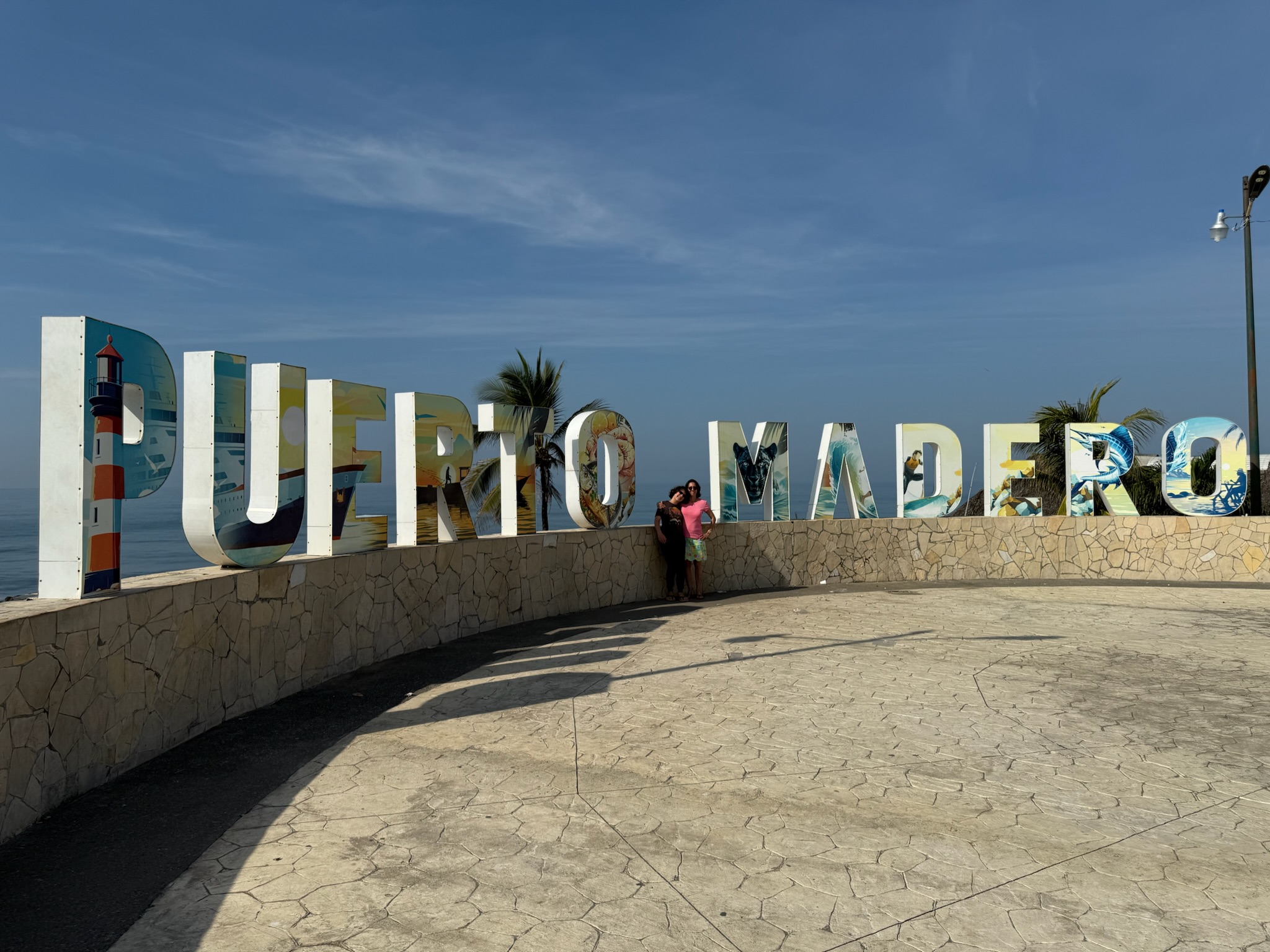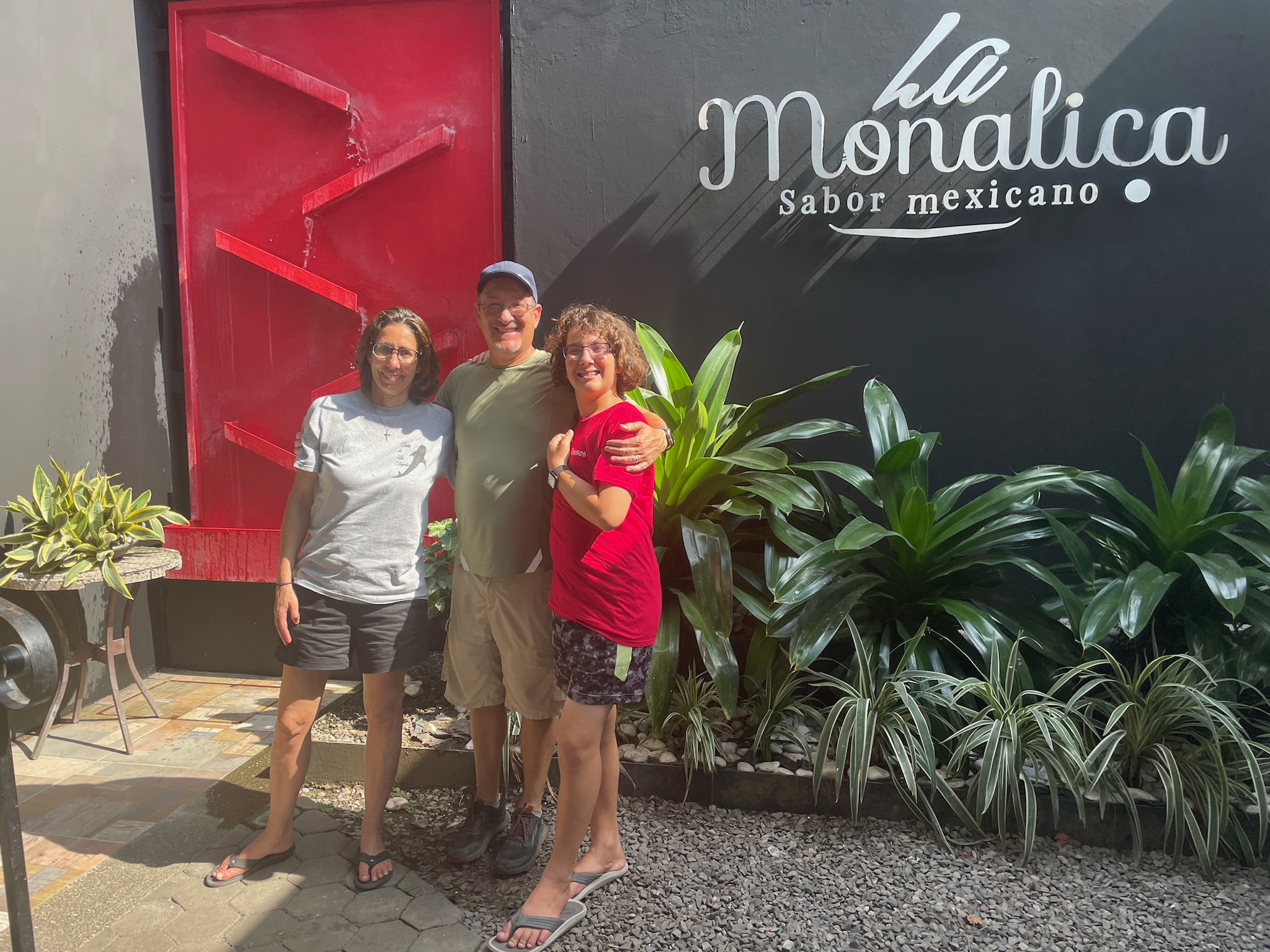Sunrise on Monday, January 20, taken from Mike and Kim’s hotel room:

Shelter Marina Bay is situated on the western side of the Panama Canal in what used to be an American military base called Fort Sherman. The City of Colon is on the eastern side of the canal.
Fort Sherman was constructed in 1911 to be the primary defensive base for the Caribbean sector of the Canal. It was 23,100 acres (93 km2). Only about half of the land was developed; the other half remained jungle. Ft. Sherman was one of the primary military training centers for jungle combat training, particularly during the Vietnam era. It was abandoned in December 1999 along with all the other American military bases in Panama. The Panamanian government turned the undeveloped jungle into the San Lorenzo National Park and deemed the developed portions as protected lands.
On Monday morning we were all up early to go for a walk in the jungle to see some of the ruins from the Ft. Sherman days, and hopefully, some jungle animals. As we were getting ready to go, our friend Teal stopped by to welcome us to the marina. It was wonderful to see him again!
Just outside the entrance to the marina, there was a fork with three roads. We took the road to the right, which we knew would lead us to what used to be the officer’s housing.


